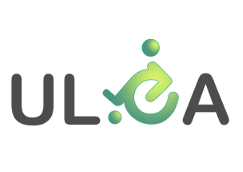ULEA and ROMEO - Research Project funded by City of Vienna, department MA23

The project team is located at the Research Group Embedded
Systems, University of Applied Sciences Technikum Wien.
The acronym ULEA stands for "Unterrichts Labor
für Elektromobilität und Assistive Technologien"
(Educational laboratory for e-mobility and assistive
technologies)
The aim of this project is to build up competence as well as to
set-up a laboratory for experimenting and training with
e-mobility systems and assistive technologies . Therefore the
University of Applied Sciences Vienna will become an more
attractive provider of technical education in the relevant
sector. Moreover the project holds the opportunity of teaching
basic technological knowledge in new ways (by giving a social
context of technology ). This can attract groups of people that
were not attracted to technology so far.
The main objectives of the Project are :
- construction of a laboratory infrastructure for teaching measuring e-mobility components in terms of their essential properties such as efficiency, power, cycle stability and operational safety. Proof of concept demonstrators show technical feasibility.
- characterization of these "Commercially of the Shelf" ( COTS ) e-mobility components in terms of the properties mentioned.
- combining such COTS components to a reliable electric mobility system "ULEA-ROMEO" (ROllstuhl Mit Elektrischem antrieb und umfeld Observierung - which translates to "wheelchair with electric drive and environment observation") using a reliable bus system ( Flexray , TT - Ethernet , ...).
- public relations, for example, in the form of dissemination and participation in relevant events (platform meetings, scientific conferences, etc.)
Specifically, the project ULEA takes gender-sensitive and
diversity oriented approaches into account:
- by combining basic technologies on e-mobility and assistive technologies with socio-political and social application scenarios , requirements and issues
- by a laboratory infrastructure is built , the problem- based learning practices and a practical approximation to course content allows ( - instead of only first theoretical mediation ).
State of the art in AT, AAT, AAL are mostly insulated standard
solutions. For interconnection, typically non-safe
communication system components are used to realize distributed
control systems. This requires costly certification and
inspection procedures. Since AT systems are almost by necessity
a "drive by wire" system, a high reliability is required. As
such systems are more and more integrated in every days domestic
life, avoiding a control-failure becomes also increasingly
critical. Even with (semi-) autonomous care systems, which will
play a significant role in the future, an high reliability is
important. Imagine a mobile platform that actually should bring
drugs to an assisted person failing to halt and knocking the
person over.
By using high-performance bus systems, integration of further
control intelligence is relatively easy to accomplish. This
offers the possibility to integrate new types of driving aids as
they are not yet commercially available (e.g. collision
avoidance of wheelchairs with the help of ultrasonic sensors).
In particular, a partially autonomous driving in indoor areas
would be possible. The user has only to select a known target,
but has no further control effort (for example, a visit to the
toilet). Accordingly, the development of such a power wheelchair
is both ideally suited to build up the infrastructure and
expertise in aspects of e-mobility assistive technologies.
This project is funded by the City of Vienna, department MA23, under grant number MA23-Projekt 15-05.
The duration of the Project is from March 2014 to February 2018.
 |
